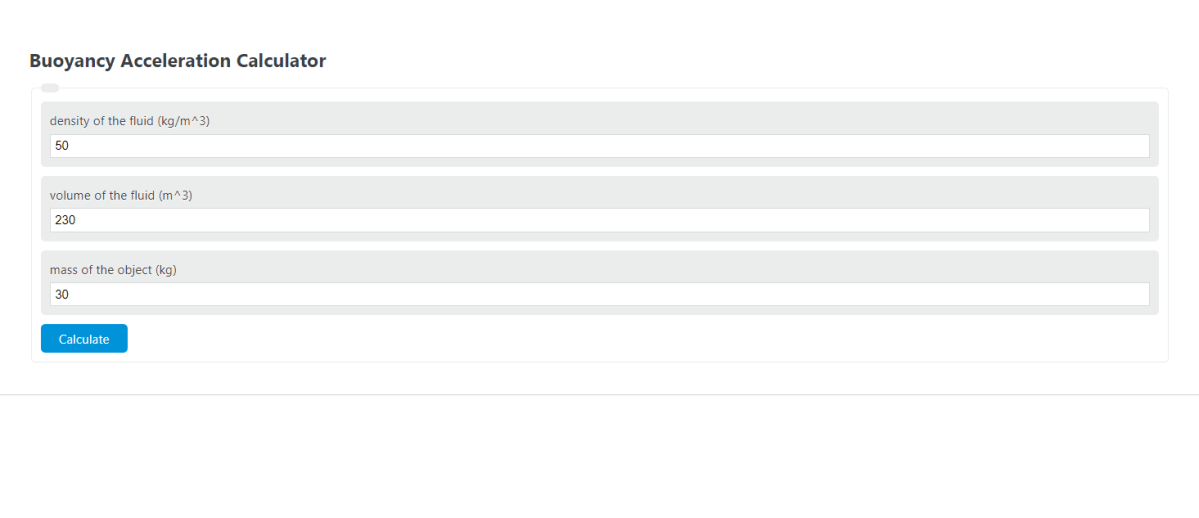Enter the density of the fluid, the volume of the fluid, and the mass of the object into the calculator to determine the Buoyancy Acceleration.
- All Acceleration Calculators
- Buoyancy Calculator
- Hydrostatic Force Calculator
- Hydrostatic Pressure Calculator
- Net Buoyancy Calculator
Buoyancy Acceleration Formula
The following equation is used to calculate the Buoyancy Acceleration.
Ab = (p*V*g- m*g) / m
- Where Ab is the Buoyancy Acceleration (m/s^2)
- p is the density of the fluid (kg/m^3)
- V is the volume of the fluid (m^3)
- m is the mass of the object (kg)
What are the units for Buoyancy Acceleration?
The most common units for Buoyancy Acceleration are m/s^2.
How to Calculate Buoyancy Acceleration?
Example Problem:
The following example problem outlines the steps and information required to calculate the Buoyancy Acceleration.
First, determine the density of the fluid. In this example, the density of the fluid is measured to be 50 (kg/m^3).
Next, determine the volume of the fluid. For this problem, the volume of the fluid is calculated to be 230 (m^3).
Next, determine the mass of the object. In this case, the mass of the object is found to be 30 (kg).
Finally, calculate the Buoyancy Acceleration using the formula above:
Ab = (p*V*g- m*g) / m
Inserting the values from above and solving the equation gives us:
Ab = (50*230*9.81- 30*9.81) / 30 = 3750.69 (m/s^2)
